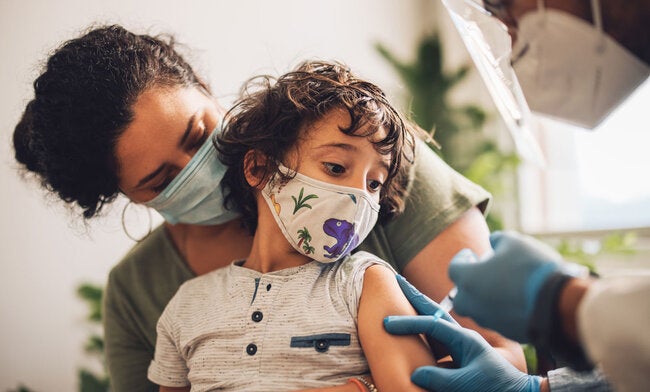
Credit: CC0 Public Domain
Ahead of the 2024 US presidential election, The BMJ has launched a forward-looking series that highlights the lessons that can be learned from the US’s COVID-19 experience and the actions that are needed to prevent the loss of another million citizens in the next pandemic and improve and protect population health.
The articles, written by leading clinicians and researchers across the US, explore topics such as how systemic racism and economic inequality contributed to COVID-19 disparities; mass incarceration and poor prison health as a driver of the pandemic; labor market inequalities; and the impact of “the hollowing of the state” (the diminished role of the public sector).
The authors call for a set of crucial systemic reforms, which they believe should be central to the manifestos of the 2024 US presidential candidates.
Importantly, the aim of the series is not to assign blame—there is plenty to go around—but to look to the future and lay out critical steps that need to be taken to transform US public health and preparedness and improve population health more broadly.
In an editorial to launch the series, guest editors Gavin Yamey at the Duke Global Health Institute, Duke University and Ana V. Diez Roux at Drexel University Urban Health Collaborative explain how during the devastating global COVID-19 pandemic, the United States suffered “eye-wateringly high” death rates compared to its peer nations.
The 1.16 million Americans killed by COVID-19 represent 16% of global deaths in a nation with 4% of the world’s population, they write. About 300,000 children are estimated to have lost one or both parents, and there is a substantial burden of long COVID.
The series documents the many complex, inter-related causes of the poor US pandemic response, underpinned by two key contexts.
The first is the nation’s pre-existing structural and systemic features, which contributed to devastating pandemic outcomes. These include gaps in health care and public health systems, the absence of social safety nets and workplace protections, ingrained social inequality, and systemic racism.
“These are key reasons why the nation suffered higher COVID-19 mortality rates than its more equal counterparts, and why pandemic death in the US was so closely patterned by social class and race,” write the authors.
The second is that while the US had many scientific resources, the government showed a troubling inability to generate reliable information, communicate it in a timely and consistent manner, and translate it into sound policy.
These failures began at the top, argue Yamey and Diez Roux. President Trump lied frequently about the pandemic, and his suggestion of using bleach to fight COVID-19 “came to symbolize the chaotic presidential communications in the pandemic’s first year.”
Poor communication of existing evidence also contributed to confusion and delayed actions. Such communication missteps is one reason for the partisan difference in how quickly states acted to institute public health protections and in excess death rates during the pandemic, especially in the period since vaccines became available.
Poor communication of evidence also led to inappropriate actions, they add.
For example, even after studies had shown that transmission by fomites (objects and surfaces) was rare and transmission outdoors was much less common than indoors, some municipalities or states kept parks, playgrounds, and beaches closed.
And after research had shown that schools could be reopened safely with basic public health measures, too many jurisdictions kept schools online only.
What’s more, the communication failures were compounded by federalism—the division of power between the national government and the 50 US states—which ensured that the COVID-19 response depended on post code, showing the limits of federalism in the face of a deadly pandemic.
Yet despite these failures, they note that the pandemic also showed the US how a different role of government and society in protecting health is possible.
For instance, as well as rapid vaccine development, which was publicly funded, strategies such as expanded unemployment benefits, food assistance programs, expanded child health insurance coverage and Medicaid enrollment, and federal funding for public school upgrades, were put in place that helped to curb suffering and death.
“Of special relevance to the 2024 US Presidential election, they illustrate how a range of government actions, beyond health insurance, can be critical to protecting health in the next pandemic and beyond,” they conclude.
In the first article of the series, David Michaels at George Washington University and colleagues consider how COVID-19 affected frontline workers in the US and what needs to be done to ensure they are better protected in future.
They argue that COVID-19 disproportionately affected low wage workers who had to leave home and go to work to keep society functioning, and say actions by US occupational and public health agencies fell far short of what was needed to make workplaces safe during the pandemic.
They acknowledge that temporary social and economic interventions during the pandemic provided some relief to these workers, but say protecting worker health in the next pandemic requires action now for paid family and medical leave, better social supports, and better workplace protection policies.
More information:
Pandemic lessons for the 2024 US presidential election, The BMJ (2024). DOI: 10.1136/bmj.q150
Citation:
Systemic US reforms needed to prevent mass death in the next pandemic (2024, January 29)
retrieved 1 April 2024
from https://medicalxpress.com/news/2024-01-reforms-mass-death-pandemic.html
This document is subject to copyright. Apart from any fair dealing for the purpose of private study or research, no
part may be reproduced without the written permission. The content is provided for information purposes only.
Note: This article have been indexed to our site. We do not claim legitimacy, ownership or copyright of any of the content above. To see the article at original source Click Here












